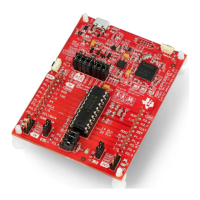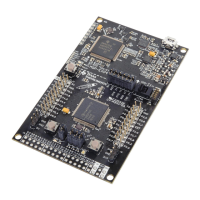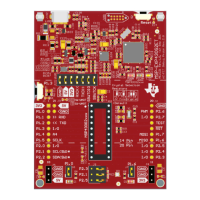4#/ >UPAO NAMQENA@ =
96 LETAHO/NKS
0.5 LETAHO/>UPA
× 96 NKSO = 18432 >UPAO
4#/ >UPAO NAMQENA@ =
96 LETAHO/NKS
8 LETAHO/>UPA
× 96 NKSO = 1152 >UPAO
www.ti.com
Software Examples
FRAM memory devices like the MSP430FR5969 are touted for ultra-low power, but in some applications
the FRAM memory can provide additional benefits such as dynamic memory allocation. In applications
with dot matrix LCD displays, it is often advantageous to keep a RAM buffer of the contents currently on
the display. For a smaller display such as the Sharp display on the 430BOOST-SHARP96 BoosterPack,
this doesn't require much RAM to keep the display contents.
(1)
But in displays with more pixels or color displays, these RAM buffers can quickly become very large. If the
Sharp display was a color display with 16 bits or color per pixel, (common in color displays) this buffer
would be significantly larger.
(2)
When selecting a microcontroller for an application with a display like this would require a very large
memory device for a typical RAM/Flash microcontroller. Typical RAM memory cutoffs would likely require
a 32KB RAM device with around 128KB or 256KB of Flash. This may be significantly more memory than
the application requires.
FRAM's unified memory block can be dynamically partitioned into data or code memory, providing
unmatched flexibility. Applications like this can be easily supported with a 32KB or 64KB FRAM device.
Figure 21. FRAM Unified Memory With Dynamic Partitioning
33
SLAU535B–February 2014–Revised July 2015 MSP430FR5969 LaunchPad™ Development Kit (MSP
‑
EXP430FR5969)
Submit Documentation Feedback
Copyright © 2014–2015, Texas Instruments Incorporated

